FUNDING CUTS IMPACT CT HUMANITIES: Help CT Humanities navigate recent funding cuts and continue our vital work across Connecticut. All donations made to CTH will be matched dollar-for-dollar up to $50,000. Donate today!
News & Updates

Civil War Soldier Dies of Gangrene – Today in History: July 10
On July 10, 1864, Civil War soldier Curtis Bacon of Simsbury died of gangrene from injuries he suffered in combat nearly two months earlier.
Read
The Who, What, Where, When and Why of Archives: How to Use Them
You could probably guess what archives might be, but think you have never seen one, or have never used one. The truth is most of us have probably used archives and don’t even know it.
Read
Waterford’s Need for Speed
The Waterford Speedbowl is a 3/8-mile oval racetrack located along Route 85 in Waterford, Connecticut.
Read
The Civil War Commences: Connecticut’s Involvement in the Civil War
Diaries, letters, and other documents provide firsthand witness to the sacrifices of Connecticut men and women during the years of bloody conflict.
Read
Connecticut Patents
From the time the federal government first began issuing patents in 1790, Connecticut was a national leader in patenting its abundant innovations.
Read
[Archived] Patents – Bloomfield’s Inventive Minds
From the time the federal government first began issuing patents in 1790, Connecticut was a national leader in patenting its abundant innovations.
Read
Blizzard of 1888 Devastates State
An unexpected and deadly March storm, stretching from Washington, DC, to the Canadian border, buried Connecticut in as much as 50 inches of snow.
Read
Richard Lee’s Urban Renewal in New Haven
Thanks largely to his efforts at Urban Renewal, New Haven’s Richard C. Lee became one of the most celebrated and well-known mayors of the 20th century.
Read
Government Orders Horse Pistols – Today in History: March 9
On March 9, 1799, the government issued its first contract for 500 horse pistols to Simeon North of Berlin at $6.50 each.
Read
29th Connecticut Colored Infantry Regiment
The state’s first African American regiment of the Civil War distinguished itself by battling Confederate forces and 19th-century prejudices.
Read
Hidden Nearby: Two Monuments to Sportsmen at Housatonic Meadows State Park
Two monuments in Housatonic Meadows State Park mark this area’s reputation as one of the finest fly fishing locales in the Northeast.
Read
An Overview of Connecticut’s Outdoor Sculpture
Public sculpture has punctuated the state for three centuries, reflecting the values of our communities, their times, and their funders.
Read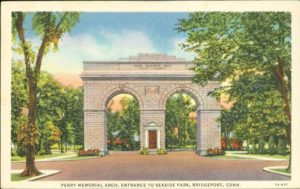

A Special Place to Honor Military Veterans in Plainville
On the corner of Maple and Whiting Streets in Plainville, Connecticut, is a special place where the town honors its war veterans.
Read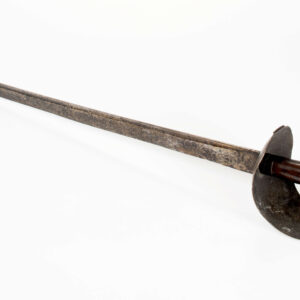
Middletown’s Nathan Starr Supplied Cutlasses for the War of 1812
On May 18, 1808, the Navy Agent Joseph Hull of New London negotiated a contract with Nathan Starr of Middletown for 2,000 cutlasses.
Read
Sheff v. O’Neill Settlements Target Educational Segregation In Hartford
This landmark case not only drew attention to inequalities in area school systems, it focused efforts on reform.
Read
Understanding the Environmental Effects of Industry by Examining the Starr Mill
The development of resources both in and around the Coginchaug River in Middletown were representative of prevailing attitudes about industrial expansion and environmental protection.
Read
Heart Pump out of an Erector Set – Who Knew?
Yale medical student William Sewell Jr. built the first artificial heart (partly out of Erector Set pieces), and conducted successful bypass experiments in 1949.
Read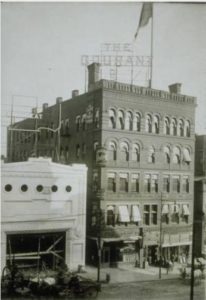
The Hartford Courant: The Oldest US Newspaper in Continuous Publication
On October 29, 1764, New Haven printer Thomas Green began publishing The Hartford Courant (then known as The Connecticut Courant) in Hartford, Connecticut.
Read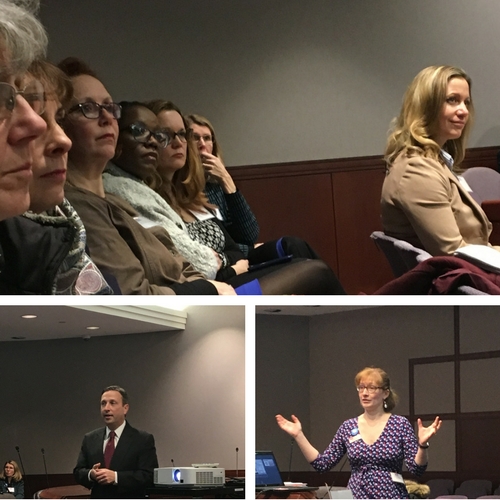
Catharine Beecher, Champion of Women’s Education
Sister to two of the most famous figures of the 19th century–Harriet Beecher Stowe and Henry Ward Beecher–Catharine Esther Beecher achieved fame in her own right as an educator, reformer, and writer.
Read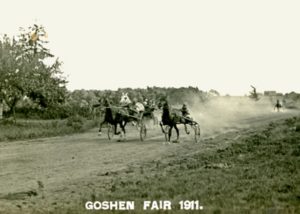
Goshen Fairs Well with Agricultural Enthusiasts
In the mid-1980s, members of the Connecticut State Grange awarded Goshen the Connecticut Agricultural Fair.
Read
Martha Graham, Connecticut College, and the American Dance Festival
Martha Hill established the School of the Dance on the campus of the Connecticut College for Women in 1948, and hired such renowned instructors as Martha Graham.
Read
Miss Huntley’s School Opens – Today in History: August 1
On August 1, 1814, a young teacher named Lydia Huntley opened a school for young women in Hartford.
Read
Rock and Roll vs. Racism
The State Theater in Hartford brought residents of all different backgrounds together in the 1950s and ’60s through the spirit of rock ‘n’ roll.
Read
The Wadsworth Atheneum Museum of Art
Founded in 1842, this ever-evolving institution is the oldest, continuously operating public art museum in the United States.
Read
Hardcore Connecticut: Documenting the State’s Punk Rock Scene
Hardcore punk rockers occupied venue spaces, spectators became performers, pools became skate parks, and Xerox machines became the printing press in this underground renaissance.
Read
Connecticut’s “Woodstock” Canceled – Today in History: July 30
On July 30, 1970, Louis Zemel had to tell a crowd of thousands that the scheduled three-day rock festival they had come for in Middlefield was canceled.
Read
P. T. Barnum: An Entertaining Life
Once declared “the most widely known American that ever lived,” this showman’s life story is as colorful as the entertainments he provided in the mid-1800s.
Read
Silas Brooks, Balloonist
This Connecticut native, Silas Brooks, earned fame as a crowd-pleasing musician, showman, and aeronaut.
Read
Farmington Canal’s Ground-Breaking – Today in History: July 4
On July 4, 1825, the ground-breaking ceremonies for the Farmington Canal took place at Salmon Brook village in Granby.
Read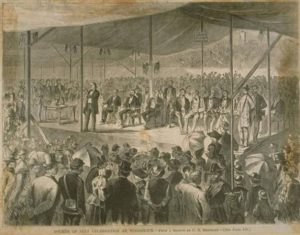
President Grant Celebrates Independence Day in Woodstock – Today in History: July 4
On July 4, 1870, President Ulysses S. Grant attended Independence Day celebrations at Roseland Cottage in Woodstock.
Read
New London’s Sound Defense
The use of privateers to supplement naval forces and wage war on an enemy was established European practice—and one the rebellious North American colonies readily adopted as they faced Britain, one of great military powers at sea, during the Revolutionary War.
Read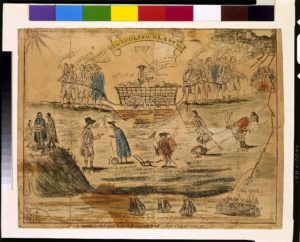
The War Connecticut Hated
For most Connecticans, the War of 1812 was as much a war mounted by the federal government against New England as it was a conflict with Great Britain.
Read
Connecticut’s War Governor, William A. Buckingham
Connecticut governor William Buckingham’s bronze statue at the Connecticut State Capitol honors his guidance of Connecticut through the Civil War.
Read
Ivory Cutting: The Rise and Decline of a Connecticut Industry
At one time, manufacturing facilities in the town of Deep River and village of Ivoryton in Essex processed up to 90 percent of the ivory imported into the US.
Read
Ivoryton Playhouse Opens – Today in History: June 17
On June 17, 1930, the Ivoryton Playhouse opened with a production of the play Broken Dishes, which had just closed in New York.
Read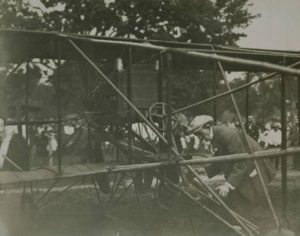
Looking Back: the First “Aero Planes”
New flying machines drew excited crowds to the 1911 opening of a new bridge between Saybrook and Old Lyme.
Read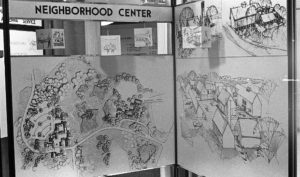
Wesleyan Hills Helps Redefine Suburbia
The design of the Wesleyan Hills community in Middletown, Connecticut, stands in stark contrast to the uninspiring, cookie-cutter suburbs of the Post-World War II era.
Read
Designed to Heal: The Connecticut General Hospital for the Insane
The design of this state facility in Middletown reflects 19th-century beliefs about the environment’s ability to influence mental health.
Read
The Frost House Once Offered Travelers a Warm Welcome
The Levi B. Frost House (or the Asa Barnes Tavern) represents over two centuries of Southington history.
Read
A Better Home and Garden in Bethlehem
The Bellamy-Ferriday House is a three-story, white clapboard house located in the center of Bethlehem, Connecticut.
Read
The Darlings Make Preservation a Family Affair
Thomas Darling was an 18th-century merchant, farmer, and politician and a member of the colonial elite.
Read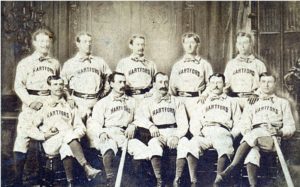
Diamonds of the Past: Hartford’s Lost Ball Parks
Erected in 1874, Hartford’s earliest baseball stadium was the Base Ball Grounds in Colt Park, on the corner of Wyllys Street and Hendricxsen Avenue.
Read
A First Amendment Lesson: Weaver High Students Teach Their Elders
In the 1960s, Hartford high school students published a controversial newspaper that sparked debates about freedom of speech and freedom of the press.
Read
George Washington Slept Here (Just Perhaps Not Well)
After his stay at the Perkins Tavern in Ashford, George Washington commented in his personal journal on the accommodations.
Read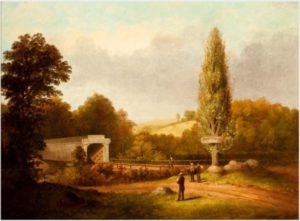
Echoes of the Old World: The Architectural Legacy of Ithiel Town
Ithiel Town was one of the first professional architects in Connecticut and one of the first to introduce the architectural styles of Europe to the United States.
Read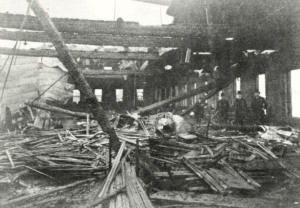
100 Years of Workers’ Compensation
Early attempts to enact industrial accident protections for workers were ruled unconstitutional by US courts, but a New York tragedy paved the way to successful legislation in Connecticut and elsewhere.
Read
A Bird’s-eye View of New Britain
By depicting Walnut Hill Park and Reservoir, which was a new addition to the city at the time, this 19th-century print documented the growing public parks movement of the era.
Read
The Decorative Arts of Connecticut
Decorative Arts—or, household furnishings— reveal past lifestyles and showcase the state’s best-known craftspeople.
Read
Selma, Not So Far Away
Father Leonard Tartaglia was sometimes called Hartford’s “Hoodlum Priest.” Like the 1961 film of the same name, Tartaglia ministered to the city’s poor and disenfranchised.
ReadMore Articles




